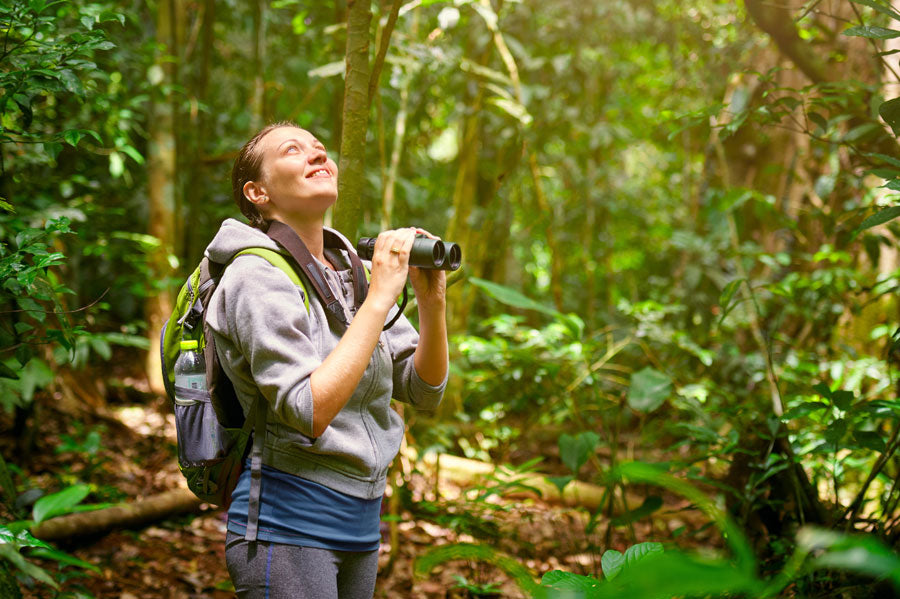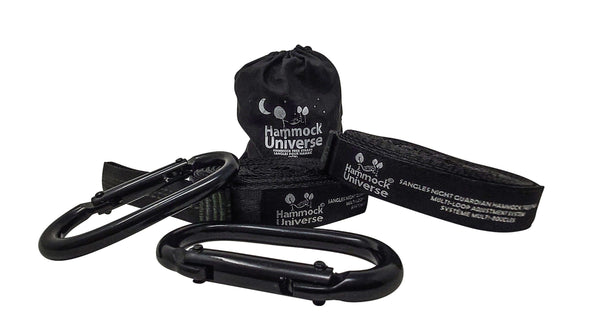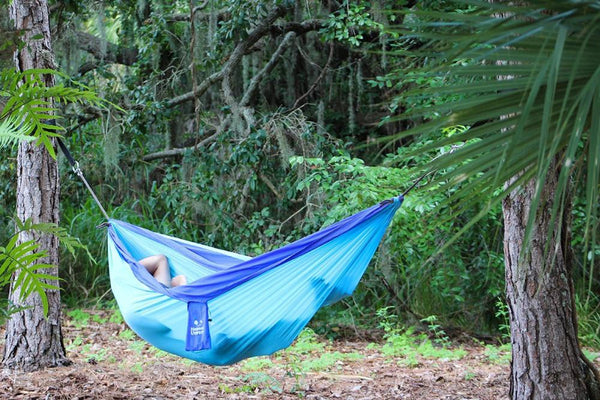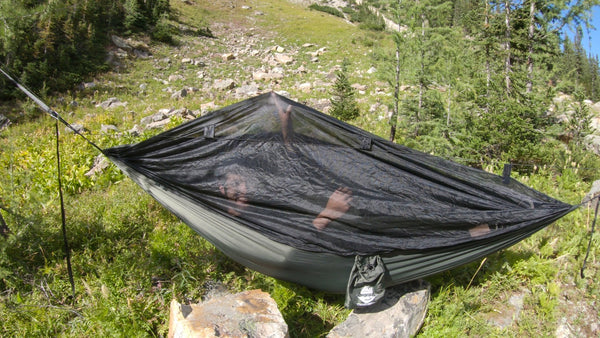FREE SHIPPING on most orders $25+ HAMMOCK BUYING GUIDE
Menu
-
-
Hammocks
-
Hammock Stands
-
Hammocks with Stands
-
Hanging Hammock Chairs
- View all Hammock Chairs
- Brazilian Style Hammock Chairs
- Colombian Hammock Chairs
- Mayan Hammock Chairs
- Mayan Hammock Chairs Deluxe
- Universal Hammock Chair Stand
- U Hammock Chair Stand
- Brazilian Hammock Chair with Universal Chair Stand
- Colombian Hammock Chair with Universal Chair Stand
- Mayan Hammock Chair with Universal Chair Stand
- Mayan Hammock Chair Deluxe with Universal Stand
-
Accessories
- Gift Cards
- Tools and Guides
- Bargain Bin
-
- 1-800-207-4761
- Login

FREE SHIPPING on most orders $25+ HAMMOCK BUYING GUIDE
Watching Wildlife: How to Observe Animals in Their Habitat Safely
March 31, 2023 8 min read

Disclaimer: Hammock Universe are not animal experts and the general information below is not to be considered professional wildlife advice. It is the responsibility of the reader to seek advice from the appropriate wildlife professionals before participating in activities that could result in any form of harm to you or an animal.
Have you ever wanted to observe wild animals in their natural habitat?
Watching wildlife can be an incredibly rewarding experience, but it's important to do it safely and ethically. That's why we've got tips and tricks on how to observe animals from a distance, read their body language, and avoid dangerous situations. And don't worry, we'll also cover the equipment you'll need to bring, and how to properly care for it!
Whether you're an experienced wildlife watcher or a beginner, this article will help you maximize your chances of seeing animals up close while respecting their space and the safety of both you and them.
Understanding Animal Behavior
If you're interested in wildlife watching, understanding animal behavior is key.
While every species has its unique characteristics, some behaviors are common across different animals. Observing and interpreting animal behavior can help you predict their actions and improve your chances of spotting them in the wild.
One important factor to consider is the time of day. Many animals are active at dawn and dusk when they're hunting for food or avoiding predators.
Understanding the habitat and typical behavior of the species you're watching can also help you predict their movements. For example, some birds migrate to specific areas during certain times of the year, while others follow regular daily patterns like roosting at night.
There's nothing quite like observing animals in their natural habitat. Whether it's watching a bird soar through the sky, or catching a glimpse of a bear on a hike, experiencing wildlife is an awe-inspiring experience. To make the most out of these moments, it's essential to have an understanding of animal behavior.
One of the most important aspects of animal behavior is body language. When watching wildlife, it's crucial to pay attention to an animal's body position, movement, and facial expressions to interpret what they are feeling. For example, if a deer is standing with its ears perked up and alert, it could be a sign that it senses danger. On the other hand, if a bear is scratching its back on a tree, it might be a sign of comfort and relaxation.
Another essential aspect of understanding animal behavior is vocalizations. Animals use a range of sounds to communicate, from chirps and growls to songs and calls. By learning to recognize these sounds, you can gain a better understanding of an animal's behavior and mood.
For example, the high-pitched chirp of a bird might indicate that it is looking for a mate, while the growl of a bear might signal aggression.
Understanding animal body language and vocalizations is a crucial part of watching wildlife. By paying attention to these cues, you can gain a deeper appreciation for the natural world and the creatures that inhabit it.
Tips for Observing Animals Safely & Ethically
Observing animal behavior can be an exciting and educational experience, but it's important to do so safely and ethically.
Here are some tips to keep in mind:
- Keep your distance: Stay at a safe distance from the animal you're observing. This will not only prevent you from disturbing the animal, but it will also keep you safe.
- Avoid making sudden movements or loud noises: Sudden movements and loud noises can startle or frighten the animal, causing it to flee or become aggressive.
- Use binoculars or a camera with a zoom lens: This will allow you to get a closer look at the animal without disturbing it.
- Be respectful: Remember that you are a guest in the animal's habitat. Don't disturb the environment or its inhabitants.
- Don't feed the animals: Feeding wild animals can disrupt their natural behaviors and may cause them to become dependent on humans.
Planning and Preparation
Before you set out to observe wildlife, it's essential to do some planning and prep!
Preparing for a Wildlife Observation Trip
When planning a wildlife observation trip, there are several factors to consider. One of the most important is the timing of your trip.
You will want to research the best time of year to observe the particular species you are interested in, as well as the time of day when they are most active. It's also important to choose a location that is known for its wildlife sightings, whether it be a national park or a designated wildlife reserve.
When packing for your trip, there are a few essential items to bring. A good pair of binoculars or a spotting scope is a must, as well as a camera to capture the moment. It's important to pack appropriate clothing and gear for the climate and terrain you will be exploring. Remember to bring plenty of water and snacks, and to pack out all of your trash and waste.
If you are planning a guided wildlife observation trip, be sure to research the guide or tour operator beforehand to ensure that they are reputable and knowledgeable about the local wildlife.
Remember, it's important to respect the animals and their habitats by observing from a safe distance!
Safe Distance from Animals
Maintaining a safe distance from wild animals is crucial for both your safety and theirs. Approaching them too closely can cause stress and interfere with their natural behavior.
That's why the distance required will depend on the species and the situation.
Recommended Distances for Observing Different Types of Animals
When observing wildlife, it's important to maintain a safe distance to ensure the safety of both you and the animal. The recommended distance for observing wildlife depends on the type of animal and the situation. It's crucial to know the behavior and habitat of the animal you want to observe.
Mammals such as bears, wolves, and big cats should be observed from a minimum of 90 meters away - which is about 295-feet. While some mammals like deer and elk can be observed from a closer distance of about 45 meters.
When observing marine mammals such as whales, dolphins, and seals, it's recommended to maintain a distance of at least 90 meters. For birds, the recommended distance varies based on the size of the bird and its habitat.
Smaller birds like songbirds should be observed from at least 5-10 meters away, while larger birds like raptors can be observed from a distance of 90 meters.
It's important to remember that these recommended distances are just guidelines and may not always be enough to keep you safe. It's always best to use caution and observe from a safe distance to prevent disturbing the animal's natural behavior.
Safety Tips for Avoiding Contact with Animals
Watching wildlife can be a thrilling and rewarding experience, but it's important to remember that these animals are still wild and can be dangerous if not respected.
To avoid contact with animals, it's important to keep a safe distance and not approach them too closely. It's also essential to understand the behavior of different animals, so you can identify potential warning signs and avoid dangerous situations.
Some basic tips for avoiding contact with animals include keeping a safe distance, being aware of your surroundings, and avoiding areas where dangerous animals are known to live. If you do encounter an animal, try to remain calm and avoid sudden movements. Back away slowly and try to create as much distance as possible.
It's also important to know the signs of aggressive animal behavior.
For example, if you notice an animal growling, snarling, or showing its teeth, it's a sign that the animal is feeling threatened and may attack. In this case, it's important to retreat slowly and avoid eye contact with the animal.
Remember, the key to avoiding contact with animals is to be aware of your surroundings, keep a safe distance, and respect the animals you are observing.
Binoculars and Spotting Scopes
Having the right equipment can make a big difference in your wildlife observation experience. Binoculars and spotting scopes are two essential tools that will allow you to see animals up close and in detail without getting too close.
Binoculars are great for observing birds and other small animals that are difficult to see with the naked eye. Look for binoculars with high magnification and a wide field of view to help you spot your targets quickly and easily.
For larger animals, such as elk or moose, a spotting scope may be more appropriate. A spotting scope is like a small telescope and is designed to magnify distant objects, making them appear closer and larger. A good spotting scope will also have a high-quality lens, which will allow you to see fine details and colors.
Maintenance and Care of Your Equipment
Proper maintenance and care of your wildlife observation equipment are essential for ensuring its longevity and optimal performance. After each use, be sure to clean your binoculars or spotting scope with a soft cloth to remove any dirt or debris.
Avoid using harsh chemicals or solvents, as they can damage the lenses or coatings.
Store your equipment in a dry and cool place, preferably in a case, to protect it from moisture and dust. Before your next trip, make sure to check that your equipment is in good condition, and replace any damaged or worn parts.
Regular maintenance of your equipment will not only extend its lifespan but also improve the quality of your observations.
Tips for Positioning Your Hammock
Hammocks can be a great tool for observing wildlife, as they allow you to relax in comfort while staying still and quiet. Still, it's important to choose the right location and position your hammock correctly to avoid disturbing the animals you're trying to watch.
When positioning your hammock for wildlife watching, look for a spot with a good view of the surrounding area, where you're unlikely to be spotted by animals before you spot them. Avoid setting up your hammock directly on animal trails or near dens or nests, as this can cause unnecessary stress to the animals and disrupt their daily routines.
It's also a good idea to position your hammock at a safe distance from any potentially dangerous animals, such as bears or large predators.
Make sure you have a clear view of your surroundings and always be aware of your surroundings while relaxing in your hammock.
Photography and Videography
Photography and videography can be great ways to document your wildlife observations and share them with others.
When photographing or filming wildlife, it is important to remember to always prioritize the safety of the animals and avoid disrupting their natural behavior.
Make sure to maintain a safe distance and use a zoom lens if needed to get closer shots. Avoid using flash, as it can startle the animals and harm their eyes.
The Takeaway
Watching wildlife can be a thrilling and rewarding experience, but it's important to do so safely and ethically.
By understanding animal behavior, planning and preparing, maintaining a safe distance, and using the right equipment, you can observe wildlife in a way that protects both the animals and yourself. Remember to always respect the animals' space and habitat, and leave the environment as you found it.
With these tips in mind, you can have a memorable and enjoyable wildlife observation experience while also being a responsible observer. Checkout our website to pick out the best hammock for your next wildlife watching trip!
Safety First!
When using a hammock*, safety is paramount. Please make sure to follow these important guidelines when purchasing, installing and using a hammock
*(includes Hammock, Hammock Chair, Hammock Stand and Hammock Accessories)
Safety First!
When using a hammock*, safety is paramount. Please make sure to follow these important guidelines when purchasing, installing and using a hammock
*(includes Hammock, Hammock Chair, Hammock Stand and Hammock Accessories)
Related Products
Want to relax?
Join for exclusive content and promotions we only give to our email list!


